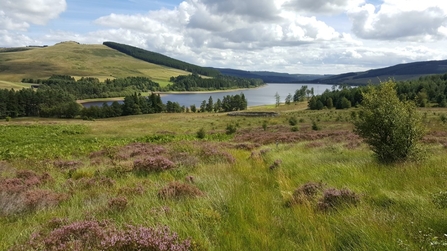A year ago today, all 46 UK Wildlife Trusts launched a vision to put nature into recovery across at least 30% of land and sea by 2030 and started an appeal to raise £30 million to begin the work. Today they are delighted to announce that in just twelve months they have raised over £25 million. Thirty-five important nature recovery projects are underway to restore land for wildlife.
The UK is one of the most nature-depleted countries in the world, with once-common creatures such as hedgehogs, red squirrels and sparrows now critically endangered, and huge reductions in the abundance of wildlife across the board. The Wildlife Trusts are determined to reverse the trend.


